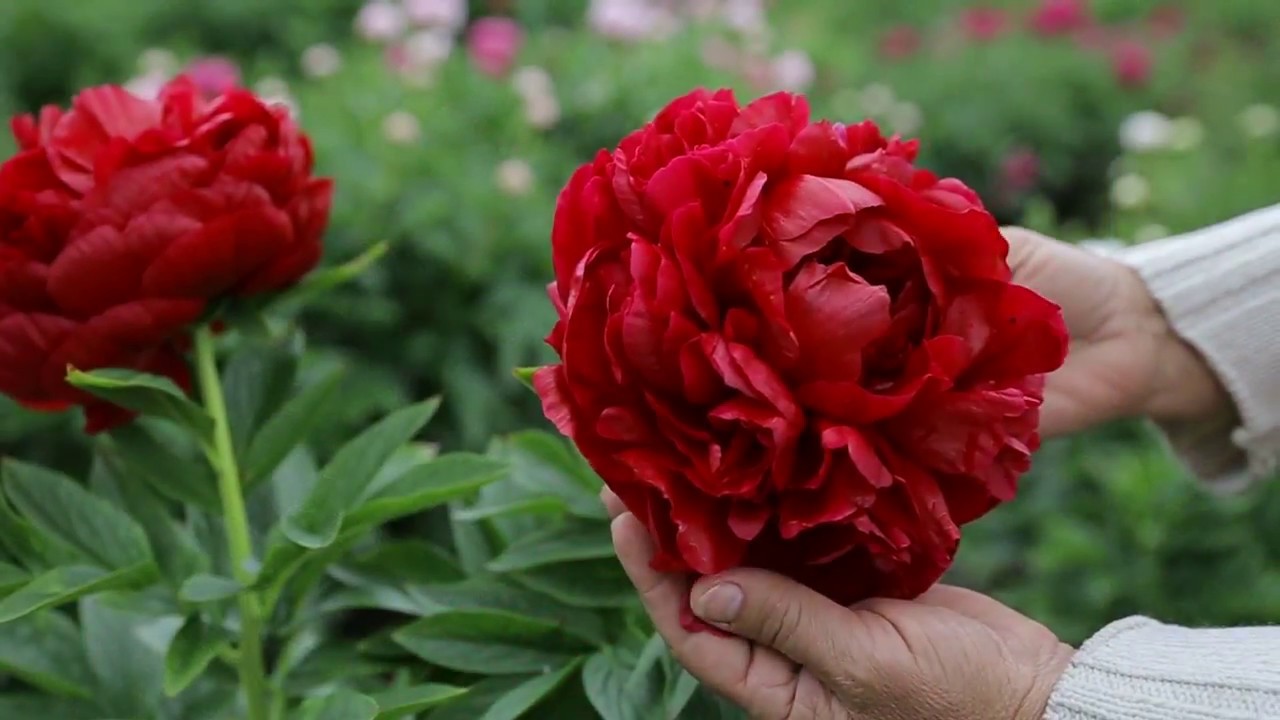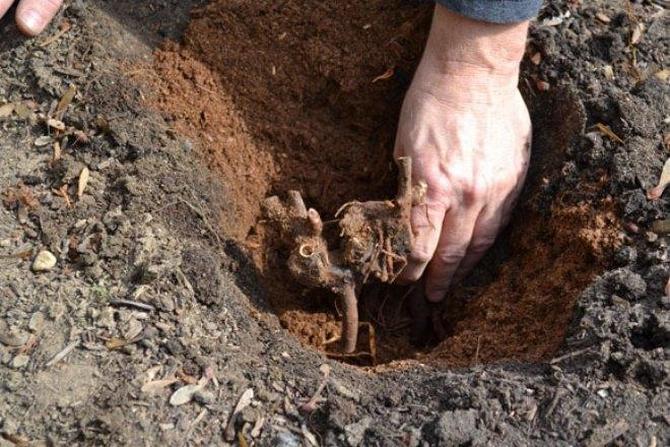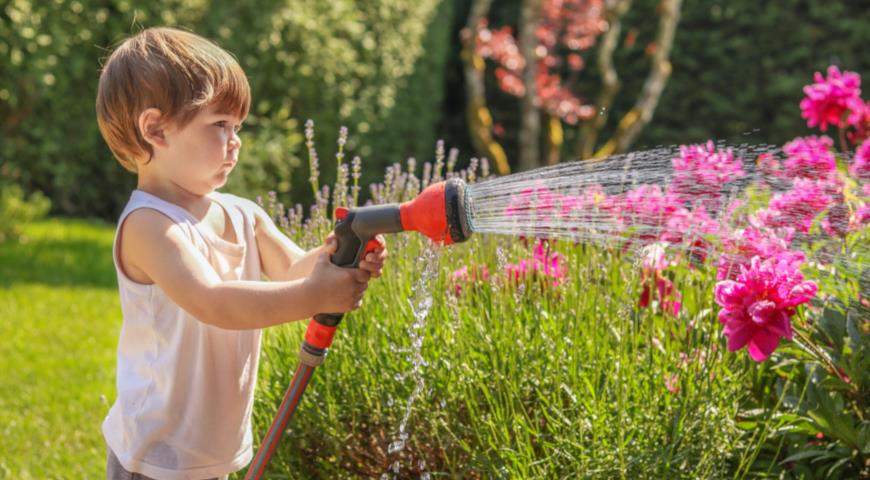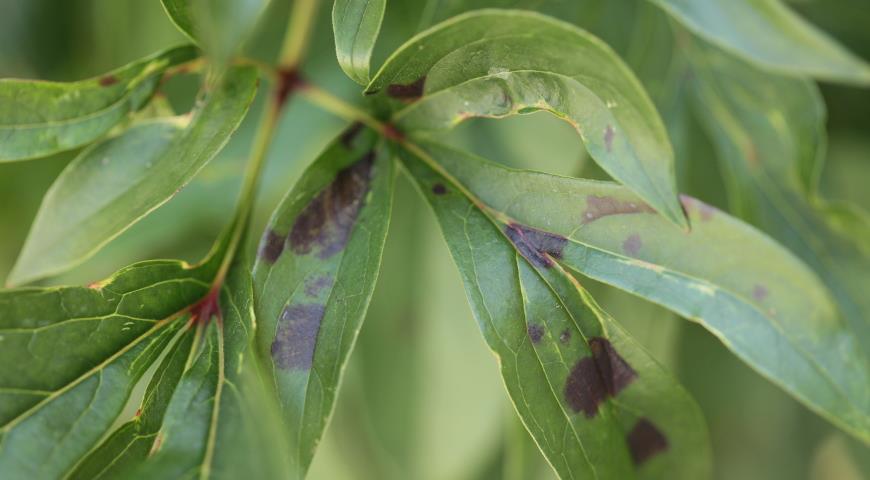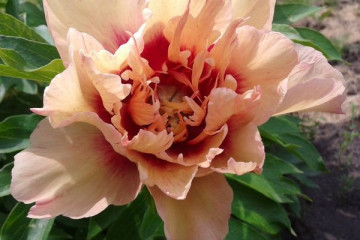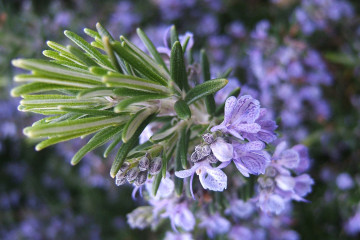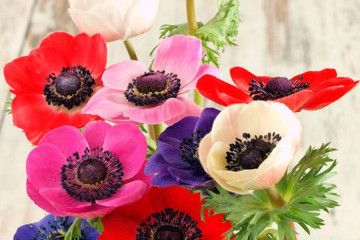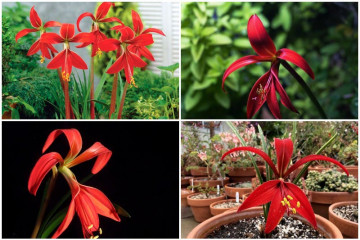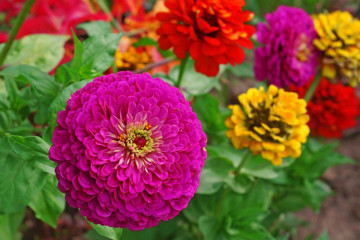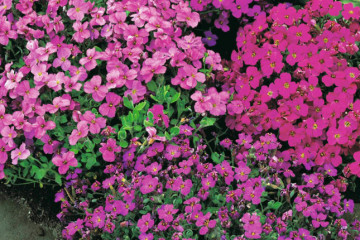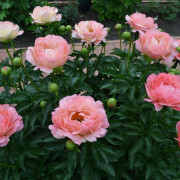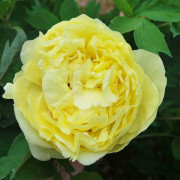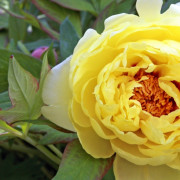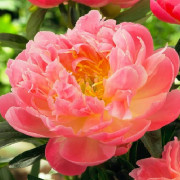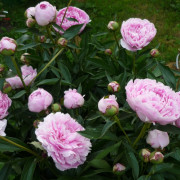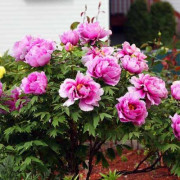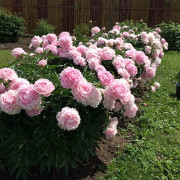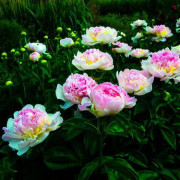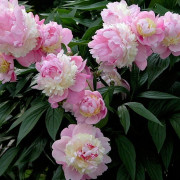Peony Henry Bockstoce - outdoor cultivation
Content:
Peony Henry Bokstos is a popular plant variety that can decorate any flower bed. To grow this culture, it is worth strictly following agrotechnical recommendations. The plant needs timely watering, feeding, pruning.
Peony Henry Bockstoce - what kind of variety, history of creation
This culture was developed in Canada. Paeonia cv Henry Bockstoce belongs to the category of milk-flowering hybrids and is a versatile herbaceous cultivar.
Brief description, characteristic
The plant belongs to terry peonies. It is characterized by thick and strong stems, which hardly hold large inflorescences. On the shoots there are light green leaves that have a yellowish tint. The plant reaches a height of 1 m.
The buds form on the tops of the shoots. The flowers are spherical and gigantic in size: up to 20-22 cm in diameter. According to the description of the peony by Henry Bokstos, the center of the buds is pink. It is formed by petals that fit tightly to each other. As they bloom, they deviate from the center. The flowers are characterized by a deep red hue with garnet notes.
The plant blooms once - in the first half of summer. During this period, the peony smells good. Hybrid variety Henry Bokstos is resistant to frost up to 40 ° C and does not suffer from common diseases.
Advantages and disadvantages of the variety
Peony Henry Bockstoce has the following benefits:
- attractive appearance;
- the possibility of using for cutting;
- frost resistance;
- strong immunity;
- drought tolerance.
A key crop drawback is the risk that peony stems will fall due to strong gusts of wind.
Use in landscape design
The plant is planted singly or combined with other flowers. The arrangement of peonies near evergreen conifers is considered a beautiful combination. They are also planted near gazebos and in flower beds. Often, peonies are used to decorate mixborders. The combination of plants of different varieties looks beautiful.
Growing a flower, how to plant it in open ground
In order for the plant to develop normally, it is necessary to correctly carry out planting work.
Planting by root cuttings
For planting with root cuttings, it is recommended to select and dig up a healthy bush, and then carefully divide it into fragments. Each part should include roots and 2-3 buds.
What time is the boarding
It is recommended to plant peonies in late summer or early autumn. Often, planting material is sold in stores in February or March. In such a situation, spring planting is permissible.
Location selection
It is necessary to plant a peony in a well-lit area. It should not be swampy or too low. Peonies can suffer from stagnant water, which negatively affects root development.
How to prepare the soil and flower for planting
The long roots of the peony must be cut to 10-15 cm. To disinfect them, you should use a solution of potassium permanganate. To speed up the rooting process, you can sprinkle the roots with a growth stimulant.
The bed must be cleaned of debris and dug up. It is recommended to add sand and black soil to heavy and clayey soil. It is important that the soil is loose and permeable.
Planting procedure step by step
- Dig a 90x90 cm depression.
- Place a drainage layer on the bottom.
- Pour in the substrate.
- Place the seedling in the hole, spread the roots and sprinkle with soil.
- Tamp the ground and water.
Seed planting
Gardeners usually do not use this breeding method. It does not allow the traits of the mother plant to be preserved. Most often it is used by breeders in order to obtain new varieties.
Plant care
In order for the plant to develop normally and bloom magnificently, it is necessary to provide it with high-quality care.
Watering and feeding
The plant requires moderate watering. Only during active flowering, the soil is moistened more abundantly. In the first year of cultivation, peonies must be fed. This ensures healthy roots are formed. It is best to use preparations with minerals.
Mulching and loosening
The root system develops upward, so the soil around the bushes should be carefully loosened. The earth should be added to the shoots. Mulching the soil is important. It helps to retain moisture in the soil.
Preventive treatment
In unfavorable conditions, there is a risk of disease and parasite damage to pions. To prevent the appearance of problems from the root circle, it is worth removing weeds, leaves and carrying out preventive treatments. For this, insecticides are used 3 times during the season.
Peony Blossom Henry Bokstos
Peonies of this variety are characterized by lush and abundant flowering. To achieve the decorative effect of the bushes, it is necessary to properly care for them.
A period of activity and rest
The flowering of peonies begins in the third year after planting in the ground. The first inflorescences are cut off. This makes the plant stronger. Peonies have large double flowers that appear at the end of May. Flowering lasts 15-20 days.
Care during and after flowering
When the buds begin to dry, it is recommended to remove them. During the flowering period, plants need abundant watering.
What to do if it does not bloom, possible reasons
The following reasons can impede the flowering of a plant:
- planting bushes in a shady place;
- too much deepening of the root collar;
- excess nitrogen in the soil;
- pruning bushes at the root immediately after flowering.
Peonies after flowering
After flowering, peonies need specific care. This will help them grow and develop better.
Transfer
Bushes of this variety must be divided and transplanted. Otherwise, the buds will become smaller and smaller. It is best to carry out the procedure in late August or early September. When transplanting in the wrong place in the spring, peonies may not bloom at all.
Pruning
In late autumn, the aerial part must be cut off. For the procedure, you should use a sharp pruner. It should be disinfected first. Pruning too early is harmful to the crop. As a result, the roots lack nutrients.
Preparing for winter
At the end of August, it is recommended to use potassium and phosphorus-based top dressing. In the fall, you need to carry out water charging. Thanks to this, the root system will tolerate frost much easier. For the winter, the bushes should be covered with a mulch layer. Its role can be played by compost or peat.
Diseases, pests and ways to control them
The plant has strong immunity, but with unfavorable climatic factors or violation of the rules of care, there is a risk of rust, ring mosaic or gray rot. To avoid this, fungicides are used.
Peony Bokstos is a popular ornamental plant that can become a real garden decoration. To achieve excellent results in its cultivation, you need to properly care for the crop.
